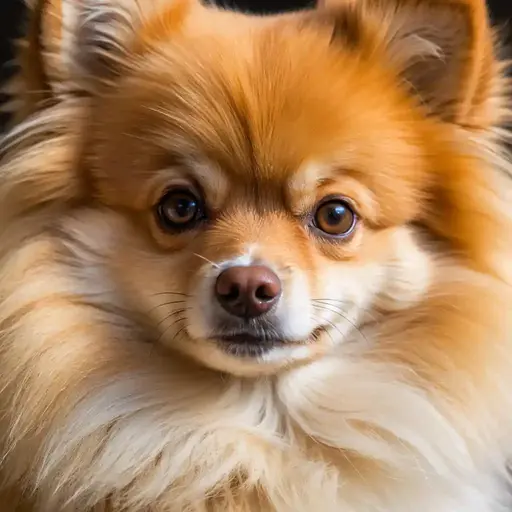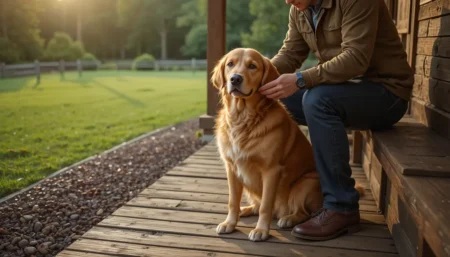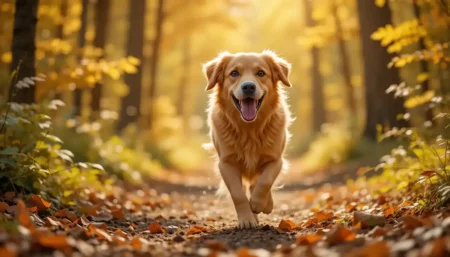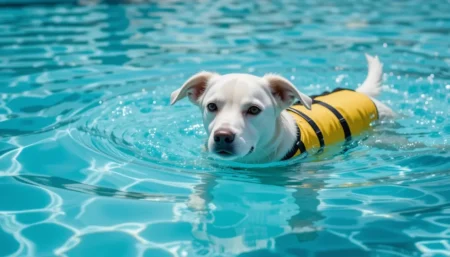The Pomeranian is a small, lively toy breed known for its fluffy double coat, big personality, and loyal companionship. Originating from the icy regions of Pomerania, this 3‑to‑7‑pound dog packs an energetic spirit into a compact frame.
In this guide, you’ll learn everything you need to know to raise a happy, healthy Pomeranian—from history and temperament to grooming, nutrition, and choosing the right pup for your home.
Overview of the Pomeranian Breed
The Pomeranian has captured the hearts of city dwellers and country families alike because it blends a striking appearance with a spirited disposition.
Below are the quick facts that give a snapshot of why this toy breed stands out.
- Size: 6‑12 inches tall; 3‑7 lb.
- Lifespan: 12‑16 years.
- Temperament: Bold, friendly, and highly alert.
- Coat colors: Orange, black, white, blue, sable, and many more.
- Origin: Pomerania (modern‑day northern Poland & Germany).
These bite-sized details help you decide fast whether the Pomeranian matches your lifestyle.

History and Origin of the Pomeranian
The Pomeranian’s journey from working dog to beloved companion is a tale of royalty, adaptation, and selective breeding.
Early Ancestors
- Descended from the large German Spitz, a versatile herding and guard dog of the Baltic region.
- Early depictions (15th century) show robust, wolf‑like dogs used for livestock protection.
Royal Favorites
- Queen Victoria’s affection for a tiny “Marmalade” Pomeranian in the 1880s sparked a dramatic size reduction.
- The queen’s endorsement turned the once‑large Spitz into the pocket‑sized companion we recognize today.
Modern Development
- American Kennel Club (AKC) recognized the Pomeranian in 1900, cementing breed standards.
- After World War II, the breed’s popularity surged worldwide, leading to a plethora of coat‑color variations through careful breeding.
The Pomeranian’s aristocratic past explains its confident demeanor and love for the spotlight.
Physical Appearance and Breed Standards
A Pomeranian’s striking looks are defined by strict AKC standards that balance elegance with functional form.
Size and Weight
| Height (shoulder) | Weight |
|---|---|
| 6 inches (15 cm) | 3 lb (1.4 kg) |
| 7 inches (18 cm) | 5 lb (2.3 kg) |
| 12 inches (30 cm) | 7 lb (3.2 kg) |
Pomeranians should be compact yet well‑proportioned, with a sturdy bone structure.
Coat and Colors
- Double coat: A soft, fluffy undercoat topped by a harsh, straight outer coat that repels water.
- Common colors:
- Orange (the classic “Poms”)
- Black
- White
- Blue (steel‑gray)
- Sable, cream, parti‑color, and brindle.
Head and Facial Features
- Skull: Broad, slightly rounded with a well‑defined stop.
- Eyes: Dark, almond‑shaped, expressive, and set well apart.
- Ears: Small, pointed, and carried upright.
Tail and Expression
- The tail is set high, gently curving over the back, and covered with the same plush fur as the body.
- Overall expression is “alert, curious, and confident,” reflecting the breed’s spitz heritage.
Understanding these standards helps you assess a Pomeranian’s health and conformation when selecting a pup.
Personality and Temperament of the Pomeranian
While tiny in size, the Pomeranian’s personality is anything but small.
Energy Level
- High: Requires daily mental stimulation and short bursts of physical activity (15‑20 minutes of play).
- Playful: Likes interactive toys, fetch, and brief walks.
Social Compatibility
- Families: Generally good with children who treat them gently; supervise play due to their delicate frame.
- Other Pets: Can coexist with other dogs and cats if introduced early; territorial tendencies may surface toward strangers.
Intelligence
- Quick learners who respond well to positive reinforcement and clicker training.
- Often excel at agility and obedience competitions for toy breeds.
Potential Challenges
- Barking: “Little watchdog” instincts can lead to frequent vocal alerts.
- Stubbornness: May test limits during training; consistency is key.
- Sensitivity: Responds better to kind, patient handling than harsh correction.
Overall, the Pomeranian thrives in households that provide affection, structure, and enough mental enrichment to keep its sharp mind satisfied.
Health, Lifespan, and Common Medical Concerns
A Pomeranian’s longevity and health depend on genetics, lifestyle, and preventive care.
Average Lifespan
- 12‑16 years is typical for well‑cared Pomeranians, with many reaching the upper end through proper nutrition and veterinary oversight.
Common Health Issues
| Health Concern | Typical Onset | Prevention / Management |
|---|---|---|
| Dental disease | 2‑4 years | Maintain a healthy weight, early vet detection |
| Tracheal collapse | 5‑8 years | Keep weight ideal, avoid harsh collars, use harnesses |
| Patellar luxation | Birth‑3 years | Maintain healthy weight, early vet detection |
| Hip dysplasia | 6‑12 months | Genetic testing, moderated exercise |
| Allergies (skin/food) | Any age | Identify triggers, hypoallergenic diet, medicated shampoos |
| Progressive retinal atrophy (PRA) | 2‑5 years | Genetic screening, regular eye exams |
Preventive Care Tips
- Annual exams: Catch issues early; vaccinate per schedule.
- Dental hygiene: Brush teeth at least 3 times a week.
- Weight control: Aim for a body condition score of 4‑5/9.
- Parasite prevention: Monthly heartworm and flea/tick medications.
Routine vet visits and attentive daily care dramatically reduce the risk of chronic problems.

Grooming and Coat Care for the Pomeranian
Because the Pomeranian’s coat is both a hallmark and a maintenance task, a solid grooming routine is essential.
Brushing Routine (Numbered Steps)
- Choose the right brush: A slicker brush for the outer coat and a metal comb for the undercoat.
- Start at the base: Gently work from the skin outward to untangle mats.
- Cover the entire body: Pay extra attention to the tail, ears, and under the legs, where debris accumulates.
- Reward: Offer a treat after each session to associate grooming with positivity.
- Frequency: Brush at least 4‑5 times a week; daily during shedding seasons (spring & fall).
Bathing
- When: Every 4‑6 weeks, or when the dog gets particularly dirty.
- How: Use a mild, dog‑specific shampoo; rinse thoroughly to avoid skin irritation.
Nail Trimming
- Trim every 2‑3 weeks. If you hear the “click” of nails on tile, it’s time for a cut.
Ear Cleaning
- Check ears weekly for wax buildup or odor. Use a vet‑approved ear cleaner and a cotton ball—never insert anything deep into the ear canal.
Professional Grooming vs. DIY
- Professional: Ideal for first‑time owners or for a “puppy cut.”
- DIY: Saves money; helps strengthen the bond if you enjoy hands‑on care.
Consistent grooming keeps the Pomeranian’s coat glossy, reduces shedding, and promotes skin health.
Nutrition and Feeding Guidelines
A balanced diet fuels a Pomeranian’s energy, supports dental health, and contributes to a shiny coat.
Daily Caloric Needs
| Weight | Approx. Calories per Day |
|---|---|
| 3 lb | 150‑200 kcal |
| 5 lb | 200‑250 kcal |
| 7 lb | 250‑300 kcal |
Adjust portions based on activity level, age, and metabolism.
Types of Food
- High‑quality dry kibble: Ideal for dental health; choose formulas with real meat as the first ingredient.
- Wet food: Adds moisture and palatability; mix with kibble for variety.
- Raw or fresh diets: Consider under veterinary guidance to ensure complete nutrition.
Treats and Supplements
- Treats: Keep to ≤10 % of daily caloric intake. Opt for small, low‑calorie bites.
- Omega‑3 supplements: Promote a glossy coat and reduce inflammation; discuss dosage with your vet.
Foods to Avoid
- Chocolate, grapes, raisins, onions, garlic, macadamia nuts, and anything with artificial sweeteners (xylitol). These are toxic to dogs of all sizes, including Pomeranians.
Proper nutrition is the foundation of a thriving Pomeranian, especially when combined with regular exercise.
Training, Socialization, and Behavior Management
Early training shapes a well‑adjusted Pomeranian and curtails common behavioral quirks.
Housebreaking (Numbered Steps)
- Establish a schedule: Take the puppy out first thing in the morning, after meals, and before bedtime.
- Designate a spot: Use the same outdoor area each time; the scent will guide the pup.
- Reward promptly: Offer praise or a small treat within seconds of successful elimination.
- Monitor: Keep the puppy on a short leash indoors until reliably toileted.
Basic Commands
- Sit, Stay, Come, Down: Teach using a clicker or verbal marker, rewarding with treats and affection.
- Leave it: Crucial for preventing scavenging of dangerous items.
Socialization Tips
- Puppy classes: Expose to other dogs, people, and varied environments.
- Controlled introductions: Use a calm environment and reward calm behavior around strangers.
Dealing with Common Issues
- Excessive barking: Identify the trigger, use the “quiet” cue, and reward silence.
- Chewing: Provide appropriate chew toys; rotate them to maintain interest.
- Separation anxiety: Gradually increase alone time, leaving a favorite blanket or a puzzle feeder.
Consistency, patience, and positive reinforcement are the pillars of successful Pomeranian training.

Exercise Requirements and Play Ideas
Even though the Pomeranian is a toy breed, it still needs daily physical and mental stimulation.
- Morning walk: A 15‑minute brisk walk satisfies basic exercise needs.
- Play sessions: Short bursts of fetch, tug‑of‑war, or agility tunnels keep the mind sharp.
- Interactive toys: Puzzle feeders, treat‑dispensing balls, and hide‑and‑seek games prevent boredom.
Aim for 30‑45 minutes of total activity per day, broken into multiple short sessions. Adjust intensity based on age and health status.
Living Environments: Apartment vs. House
The Pomeranian’s adaptable nature makes it suitable for many home settings—provided certain needs are met.
- Apartment living:
- Small footprint fits well.
- Noise‑sensitive neighbors? Train the dog early to control barking.
- Use a harness instead of a collar to protect the delicate trachea.
- House with yard:
- Provides extra space for safe outdoor play.
- Still requires supervision; Pomeranians can be prone to escape through small gaps.
- Climate considerations:
- Thick double coat makes them comfortable in cooler temperatures, but they can overheat in extreme heat—provide shade and fresh water.
Overall, the key is regular engagement, safe surroundings, and temperature monitoring.
Choosing a Pomeranian: Adoption, Rescue, and Reputable Breeders
Finding the right Pomeranian starts with understanding the sources and asking the right questions.
Adoption and Rescue
- Pros: Saves a life, often lower cost, and many rescues provide initial health screenings.
- Considerations: May have an unknown pedigree; inquire about temperament history and any past medical issues.
Selecting a Reputable Breeder
- Health testing: Look for breeders who screen for hip dysplasia, patellar luxation, and PRA.
- Visit the facility: Clean, well‑socialized puppies and visible parents are good signs.
- Documentation: Expect a health guarantee, vaccination records, and a contract outlining return policies.
Red Flags to Avoid
- Puppy mills: Overcrowded conditions, lack of health records, and “buy now, pay later” pressure.
- Unrealistic pricing: Extremely low prices often indicate poor breeding practices.
- No health clearances: Reputable breeders will willingly share test results.
Whether you adopt or purchase, thorough research and a genuine connection with the pup are essential for a lifelong partnership.
FAQs
How long do Pomeranians typically live?
Pomeranians usually enjoy a lifespan of 12 to 16 years when given proper nutrition, regular veterinary care, and an active lifestyle.
Do Pomeranians shed a lot?
They have a thick double coat that sheds year‑round, with heavier “blow‑outs” in spring and fall. Frequent brushing reduces loose hair and keeps shedding manageable.
Are Pomeranians good with children?
Yes, when children are taught to handle them gently. Their small size makes them delicate, so supervise interactions, especially with toddlers.
What is the best diet for a Pomeranian?
A high‑quality dog food that lists real meat first, appropriate calories for their weight, and added omega‑3 fatty acids supports coat health and overall vitality.
How often should I groom my Pomeranian?
Brush the coat 4‑5 times a week, bathe every 4‑6 weeks, and trim nails every 2‑3 weeks. Consistent grooming prevents matting and skin issues.
Conclusion
The Pomeranian blends a regal heritage with a bold, affectionate personality, making it a standout toy breed for families, singles, and seniors alike.
By understanding its history, physical traits, temperament, health risks, grooming needs, and dietary requirements, you can provide the optimal environment for a thriving companion.
Actionable tip: Schedule a veterinary wellness exam within the first month of bringing your Pomeranian home, and set up a weekly grooming routine—this proactive approach lays the foundation for a long, joyful partnership with your fluffy friend.






